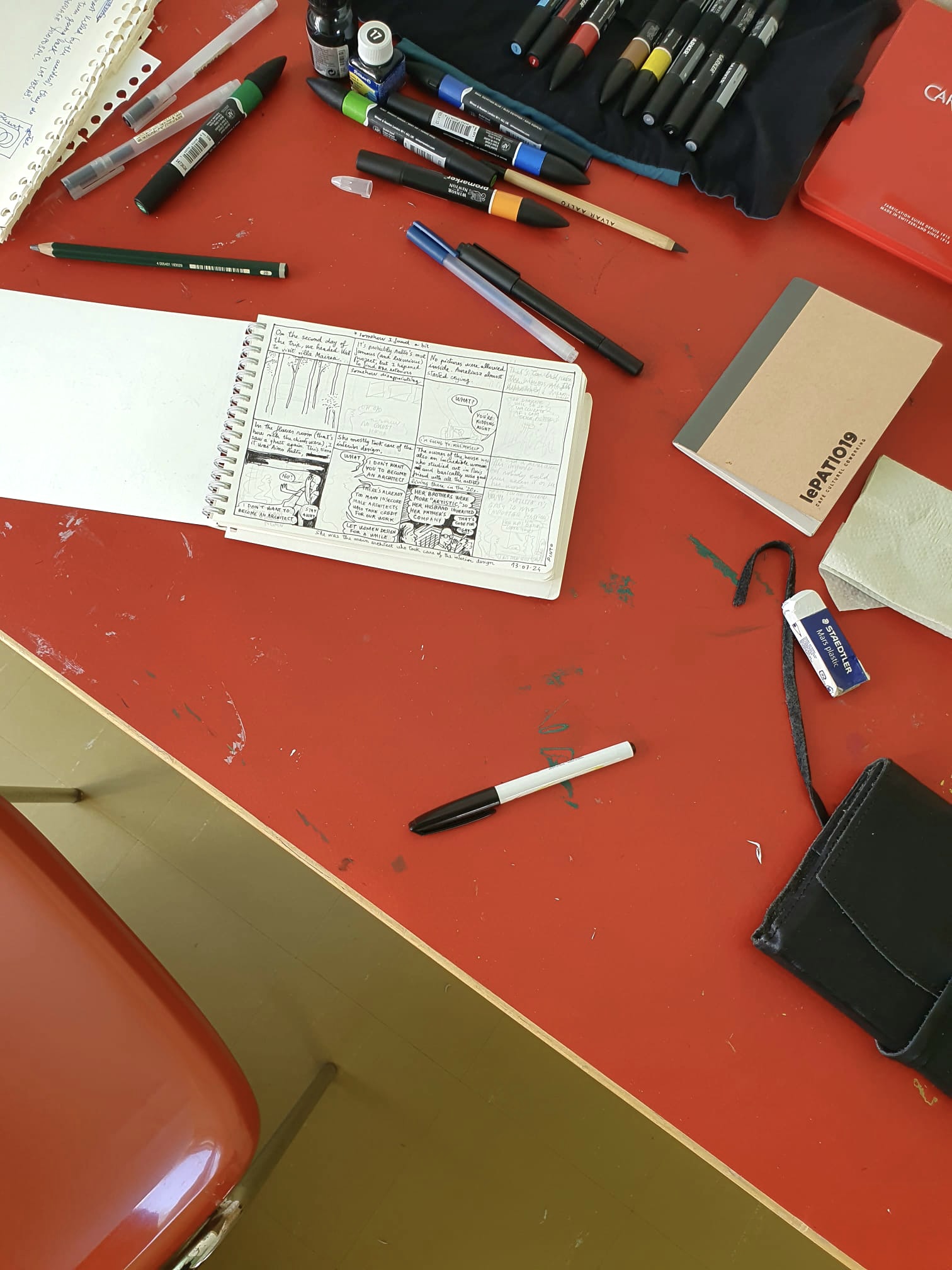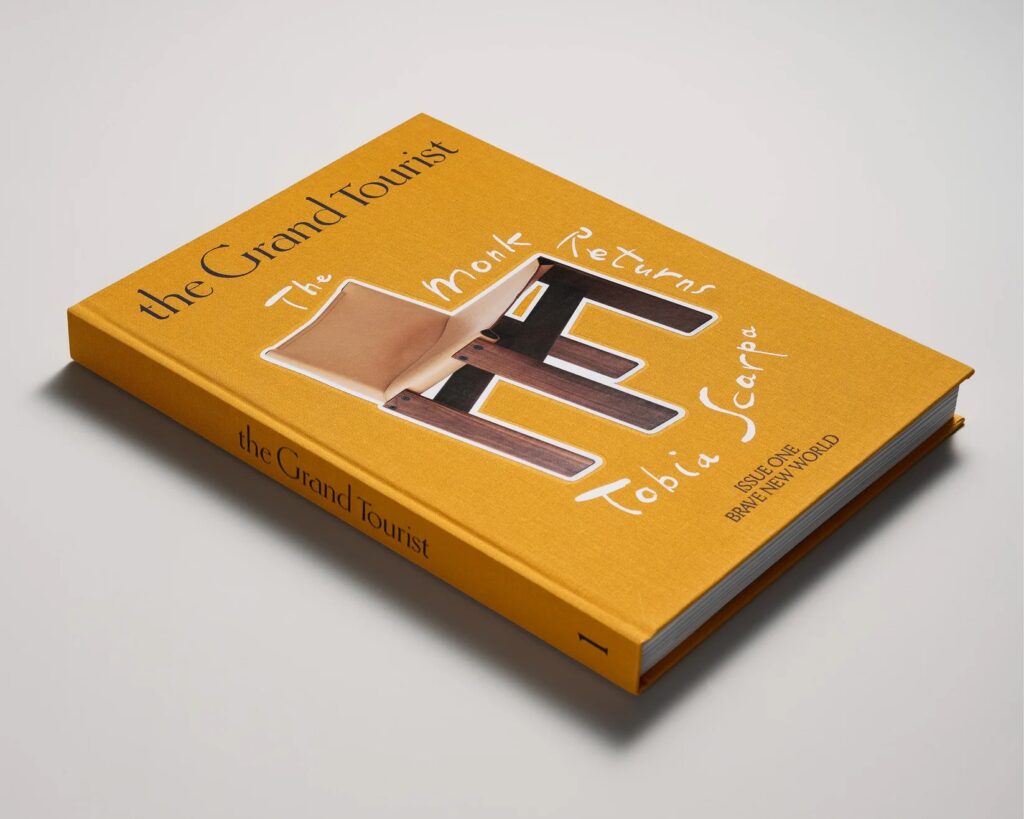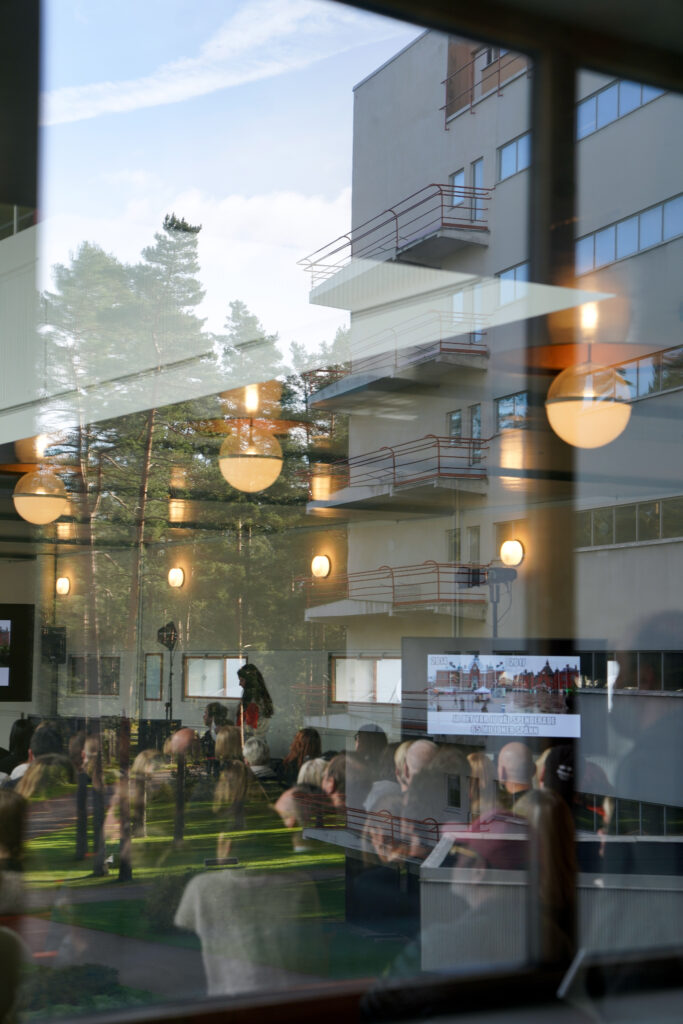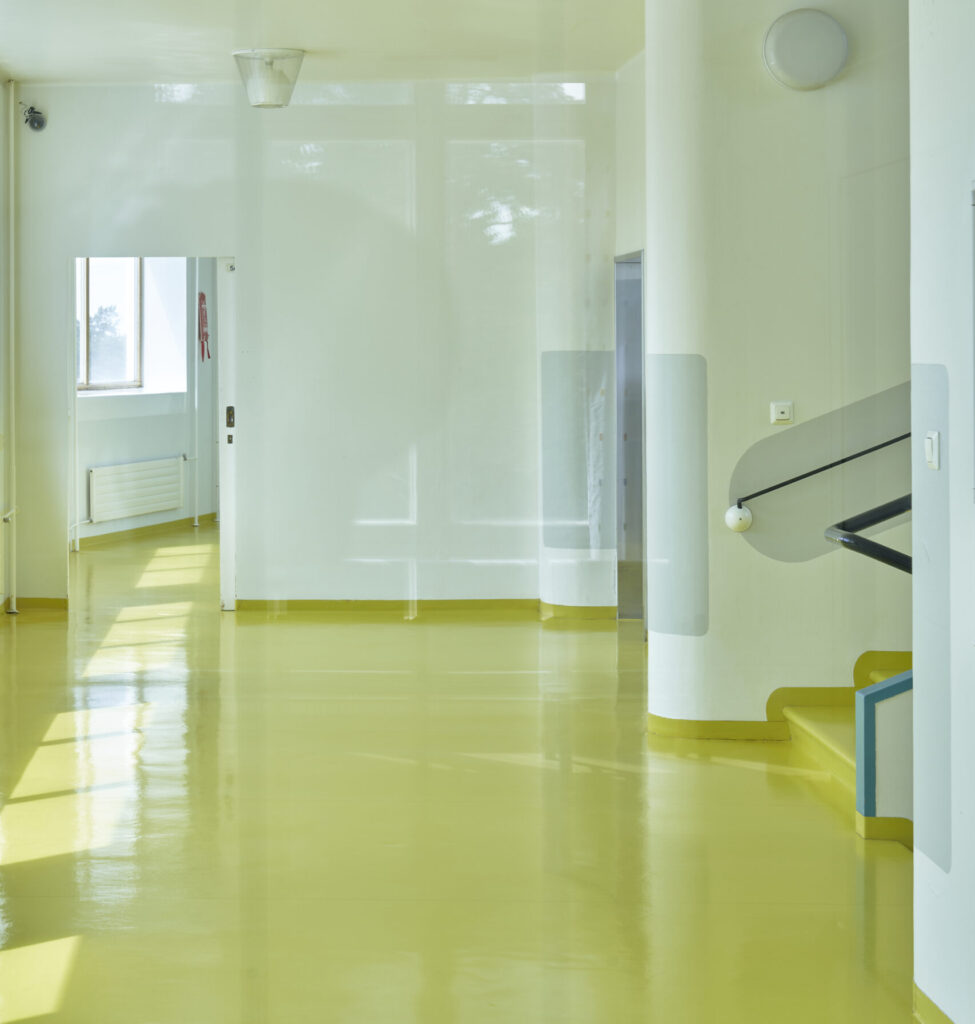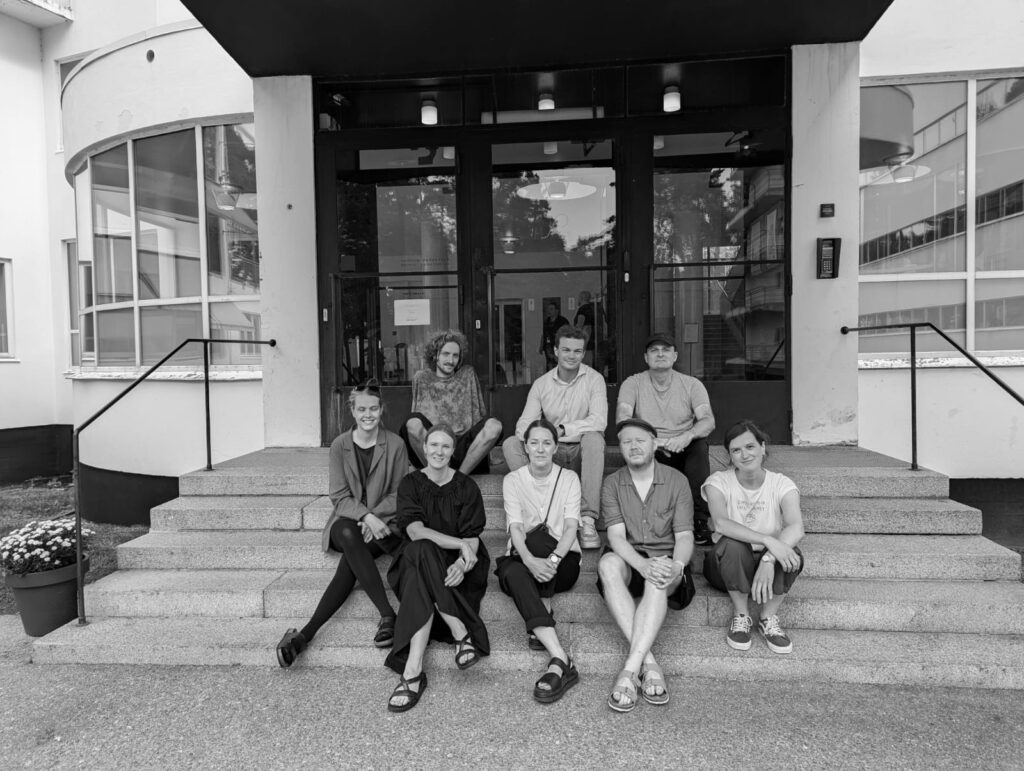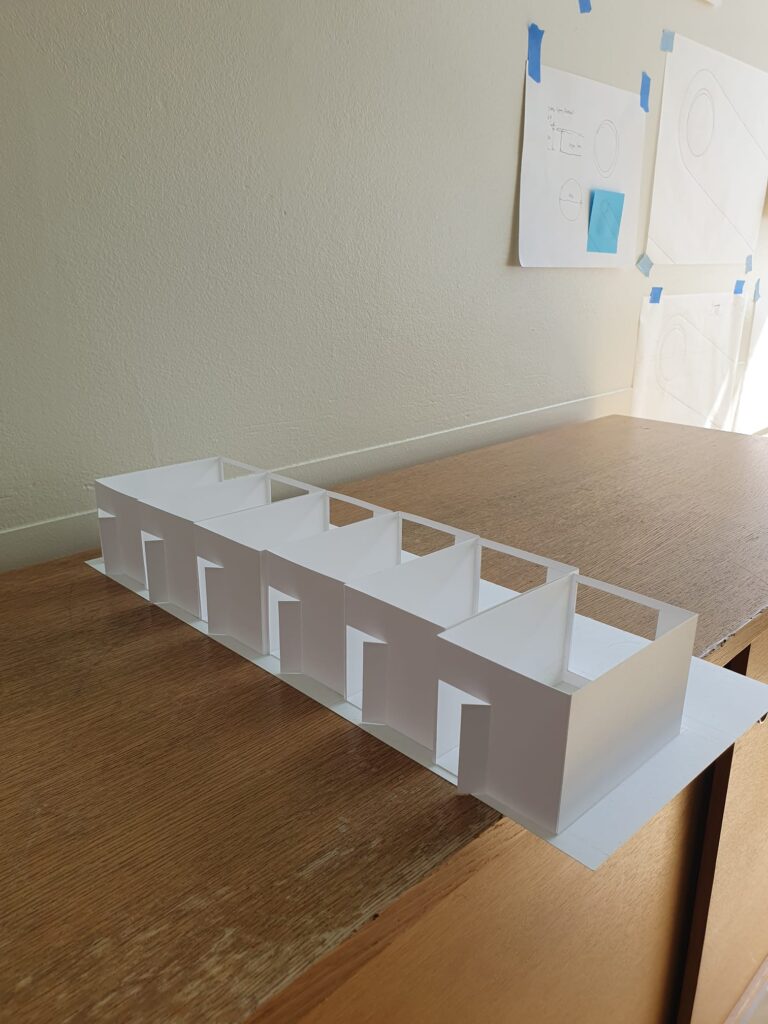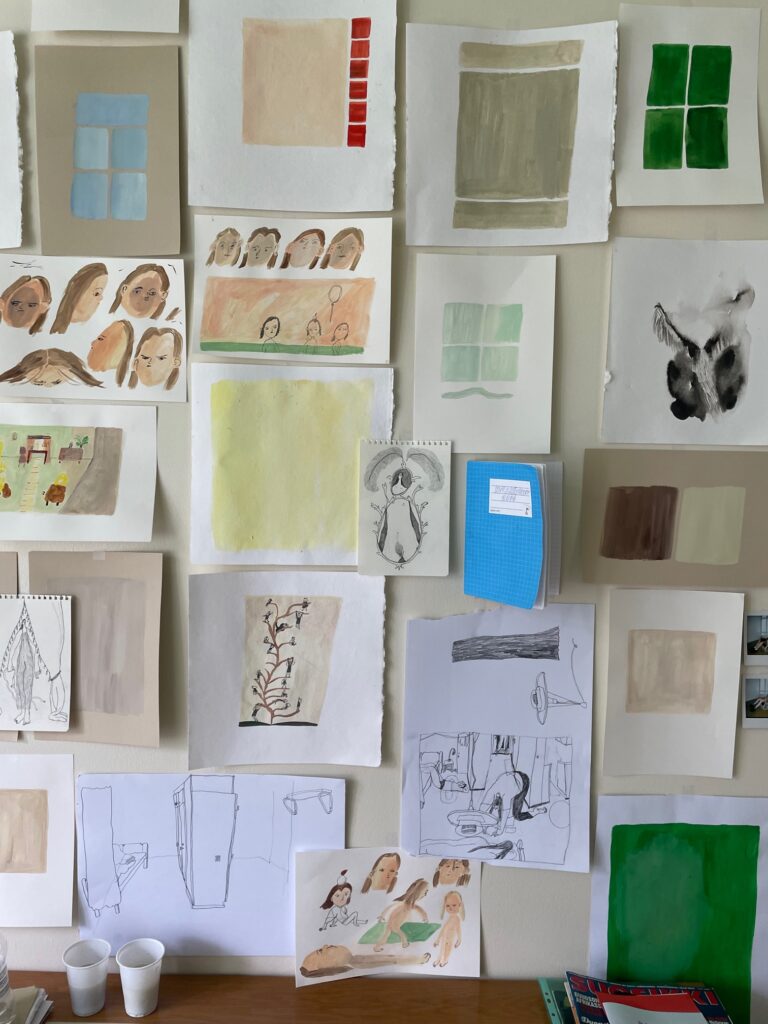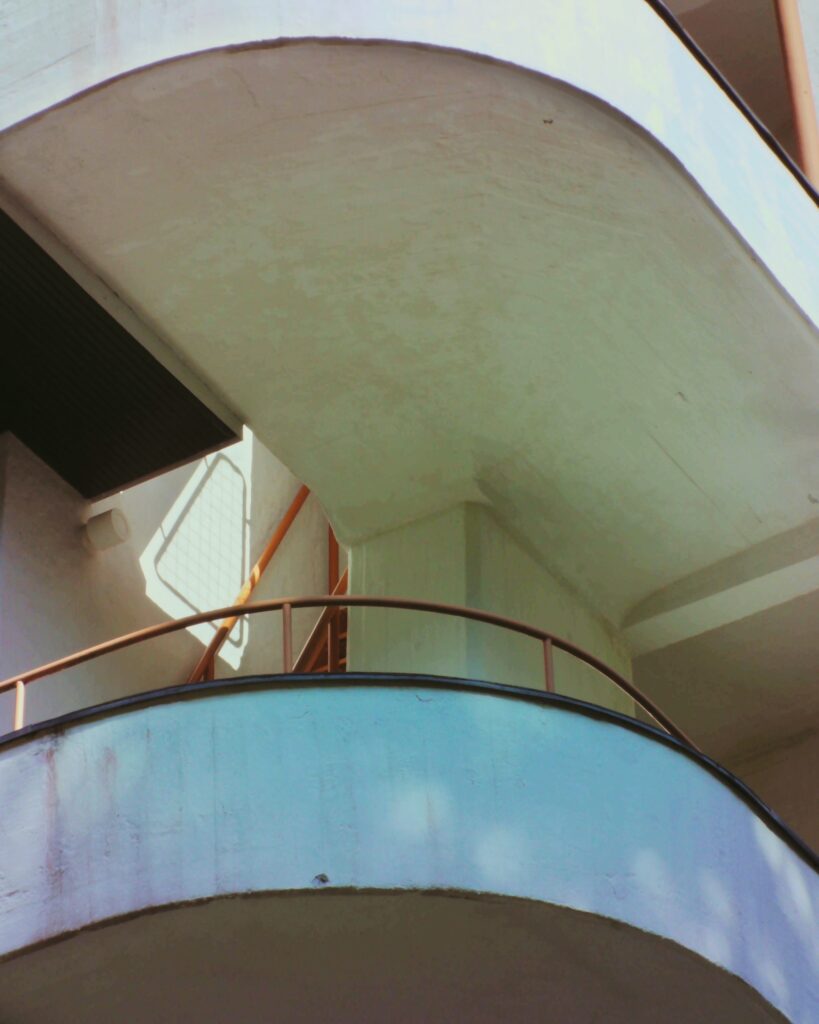In Summer 2024, the Paimio Sanatorium Foundation offers a unique, three-week residency for artists across various fields, including architecture, design, visual arts, performing arts, music, literature, writing, film, and curating. Selected participants will work and live in the modern architectural masterpiece by Alvar and Aino Aalto for three weeks.
July residents are now in full swing of work. Here are their thoughts about the residency and the works they are going to do.
’’Last year, together with my friends, I was accepted to join the Tokyo Art Book Fair where I was able to showcase my recent work,” architect Aureliusz Kowalczyk tells.
Rewarded with a multitude of interest from people who were genuinely very excited about his art and keen to discuss it further, he slowly shifted his focus and work balance in his architecture studio based in Tokyo towards art. Originally from Poland, he has lived in Tokyo now for 15 years.
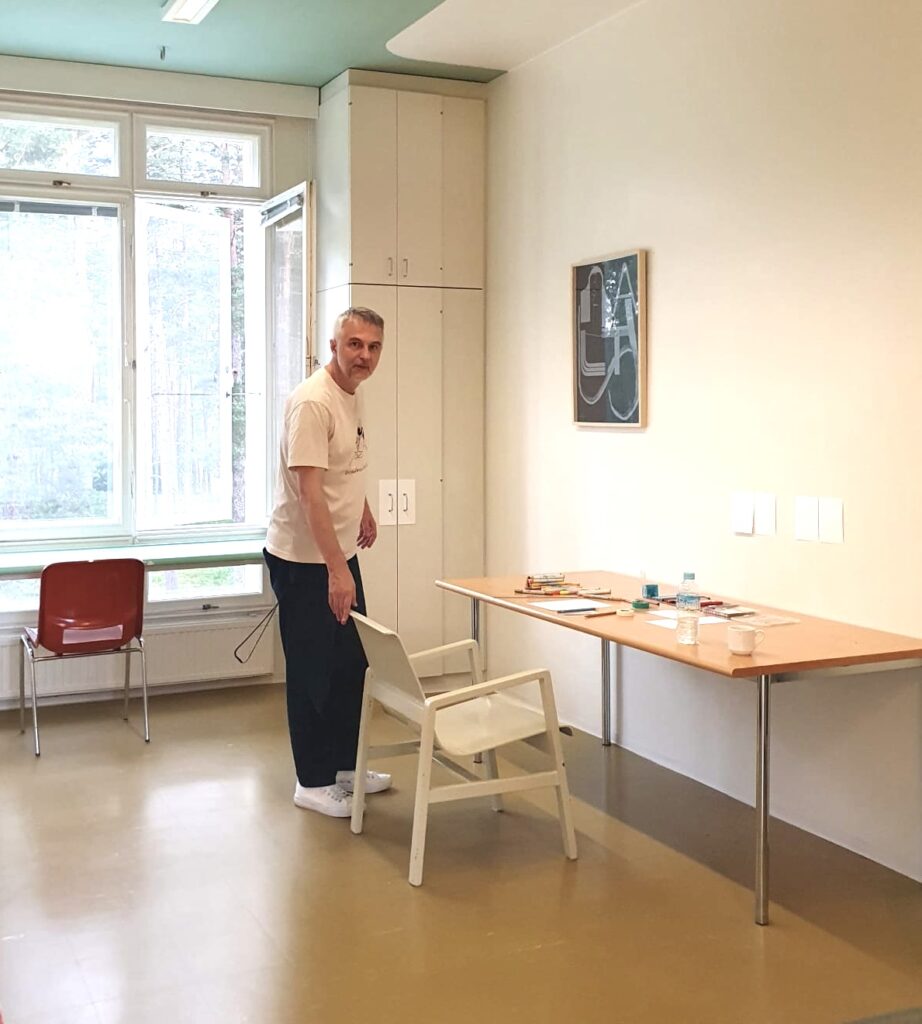
Aureliusz in his work room
’’My artwork has always been influenced by architecture. I would like to complete my next phase of geometric studies entitled ‘Temporary Constructions’ so it can be published and shared with a wider audience.”
The residency is also a pivotal moment for Kowalczyk in understanding where he goes from here. ’’For me, it has always been a balancing act between architecture and art.”
Breaking Free from Architectural Practice
Enrico Pinto is an Italian illustrator and comic book artist, trained as an architect in Milan and currently based in Paris. He is also breaking free from architectural practice to concentrate on magazine illustrations and his comic novels.
’’Last year I published my first graphic novel, and now I am working on a new graphic novel about the legacy of Postmodern architecture, through the eyes of Denise Scott Brown”, Pinto says. The idea for this project came out of a deep fascination with her personal story and the reading of the book ‘Learning from Las Vegas.’
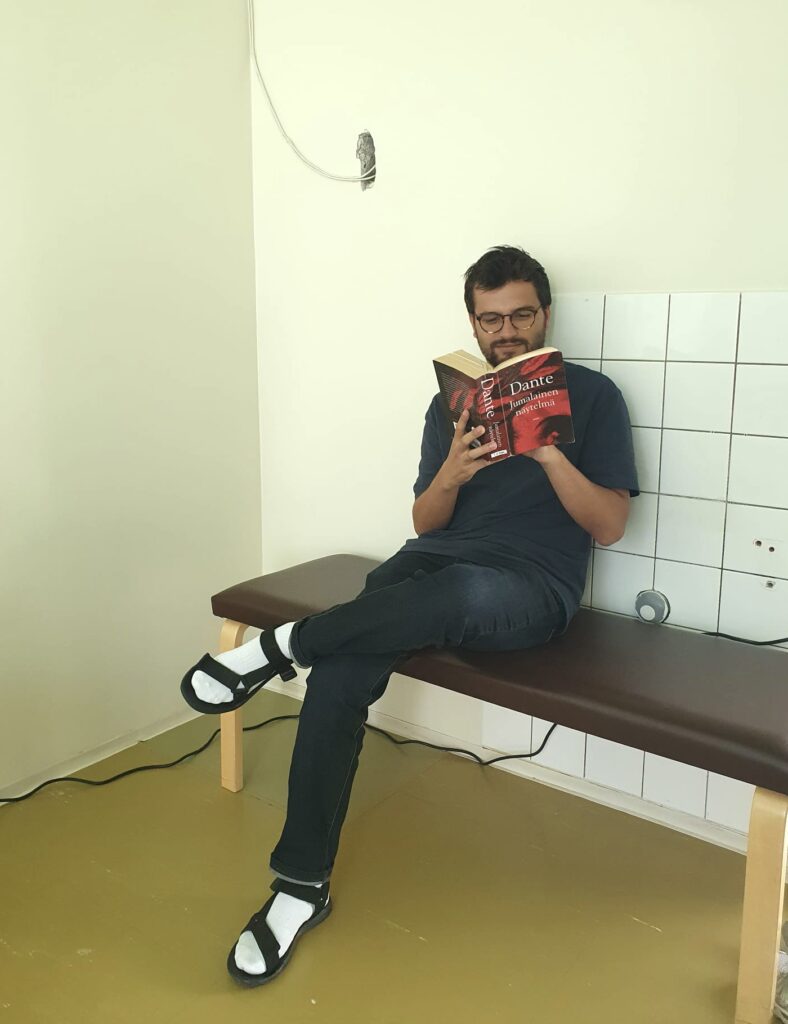
Enrico learning Finnish with Dante’s Divine Comedy
“This seminal text taught me how to look at architecture from a different perspective, without bias and superstructures, literally to think outside the box. His goal is to build a story around Scott Brown’s grand adventure in Las Vegas: a story about casinos, consumerism, architecture, but also about immigration, feminism, and love.
’’I work hard not to go back to work in architecture.”

Enrico also draws daily comic strips of his time in residency
Invisible Structures of Modernity
’’My artistic practice includes research on history and heritage, aesthetics and politics, and an experimental approach to form and material”, Aiko Tsukahara says. She is a Japanese artist based in Helsinki.
Through her work, Tsukahara aims to visualize the invisible structures that shape the contemporary landscapes we live in.
’’For the past couple of years I have been working on projects to explore how the aesthetic values of modern art and architecture have influenced the ways we see the world today.”
Aino and Alvar Aalto’s architectures are distinguished by being human-scaled, empathetic, and coexisting with nature. Nowadays these notions have become ‘normal’ or even mandatory when planning a new building.
’’My approach to the projects is in some ways a celebration of modernism and in some ways a critical reflection of its ideology.”
Though she has created mostly sculpture-based installations using architectural elements as a core subject, during her residency she will work with charcoal and paper.
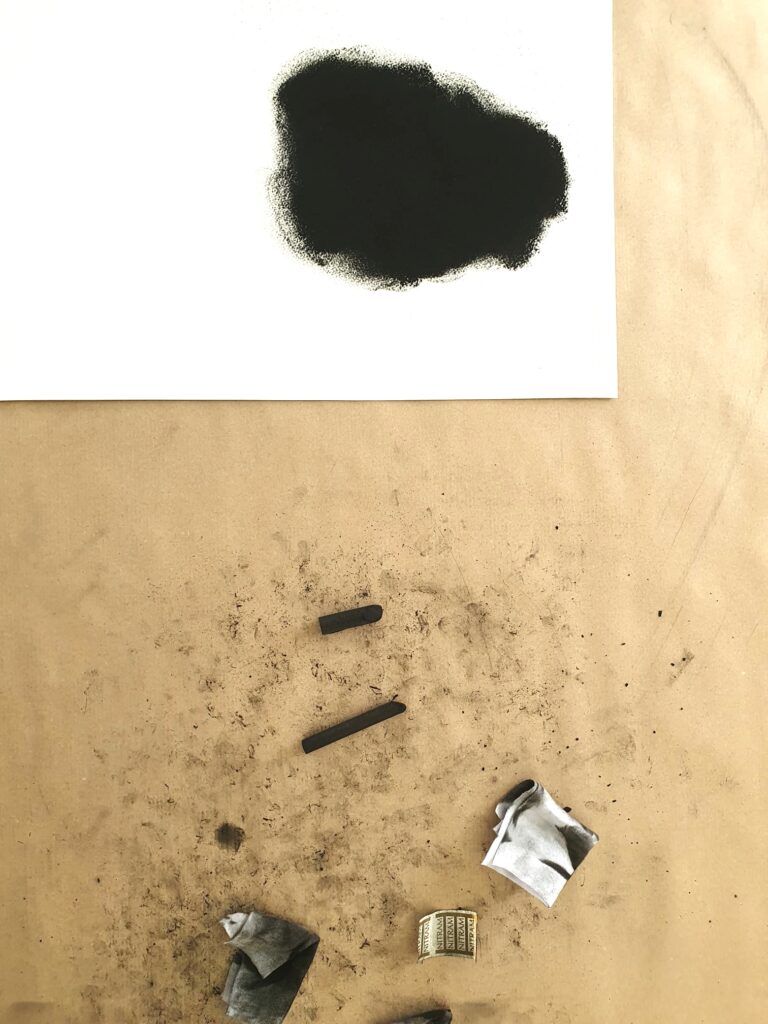
Charcoal on paper
’’Charcoal symbolizes the industrial revolution that brought air pollution and widely spread tuberculosis in Europe.”
The sanatorium is one of the by-products of modernism, and Tsukahara is combining the material and place. She attempts to depict the contemporary notions of the sun through her own artistic practice.
’’The sun can be as large scale as an abstract idea. The sun can also be noticed by its absence, like the one in the Finnish winter.”
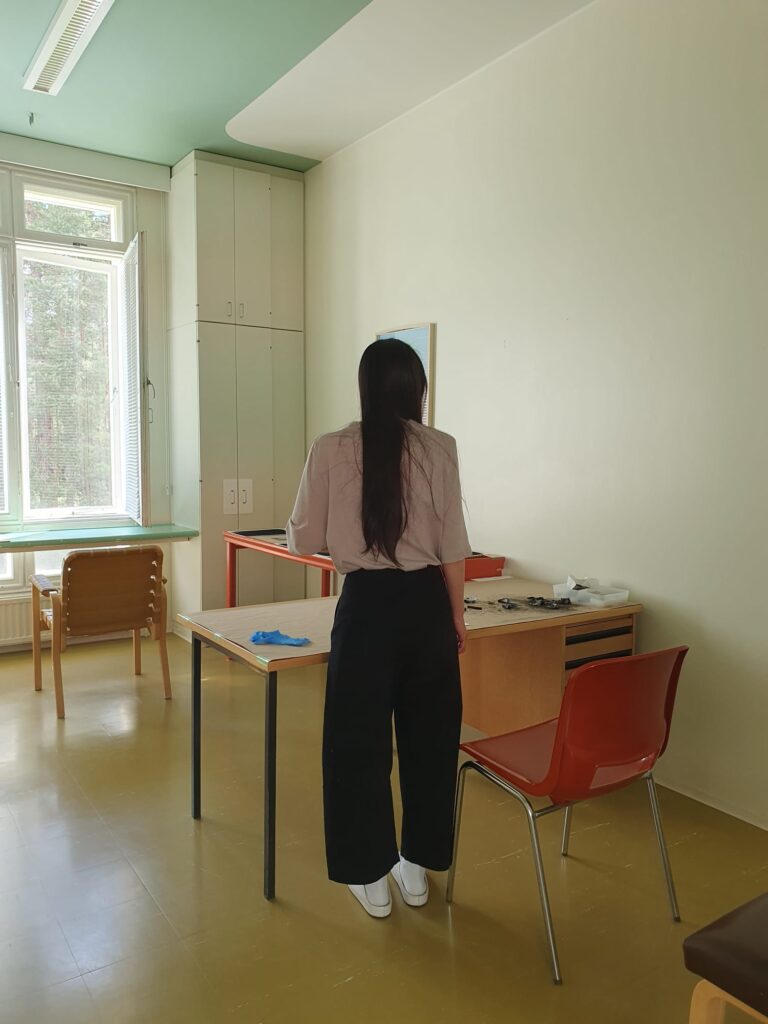
Aiko on picture
In the Studio
One of the residency rooms has transformed into a well-equipped recording studio. Musician Ringa Manner did not travel lightly to the residency.
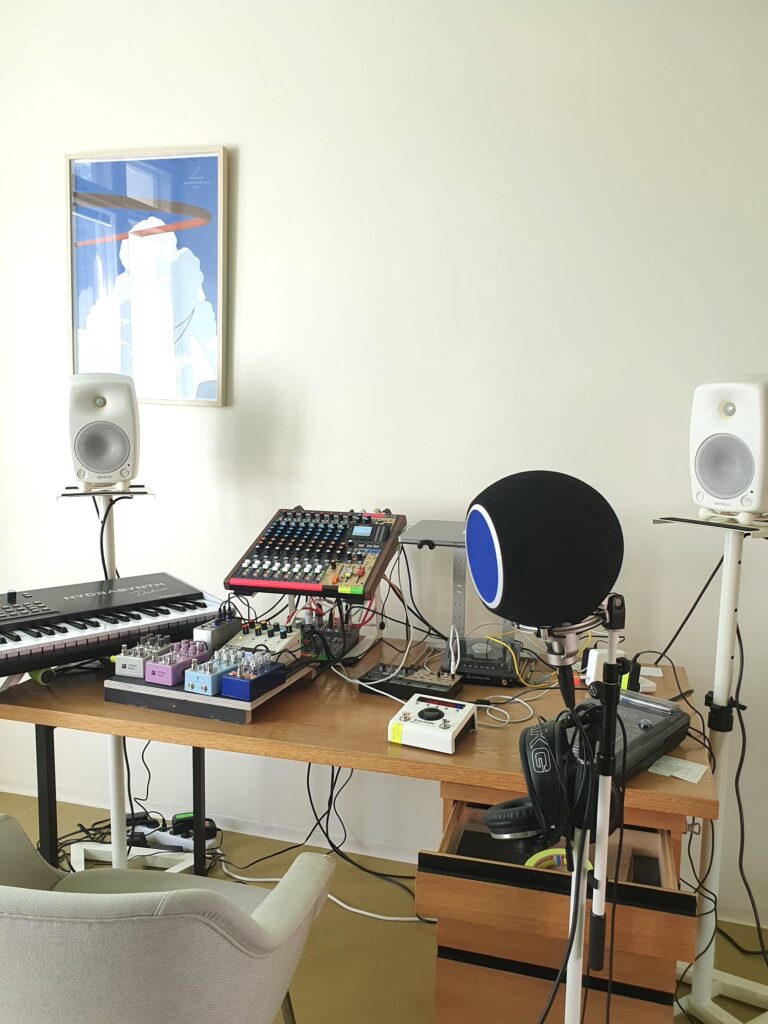
Pump up the volume
’’During the residency, I want to advance various ideas that have accumulated in my phone’s notes, paper notebooks, computer hard drives, and tangled thoughts,” says Manner, who is best known from the band Ruusut, critically acclaimed for their eclectic pop music. However, in the residency, she is focusing on her solo career, which is more experimental.
’’It has been five years since my last solo album”, Manner says.
There is a lot of material. There are written thoughts from which she sprouts lyrics. There are poems or short stories, photographs or fragments of poems, whose moods she translates into music. And, of course, there are also musical ideas that Manner works on and structures.
’’In the residency, I structure and develop existing material, text, and sound, and compose and write new material to continue the existing work. I plan and prepare for later recordings.”
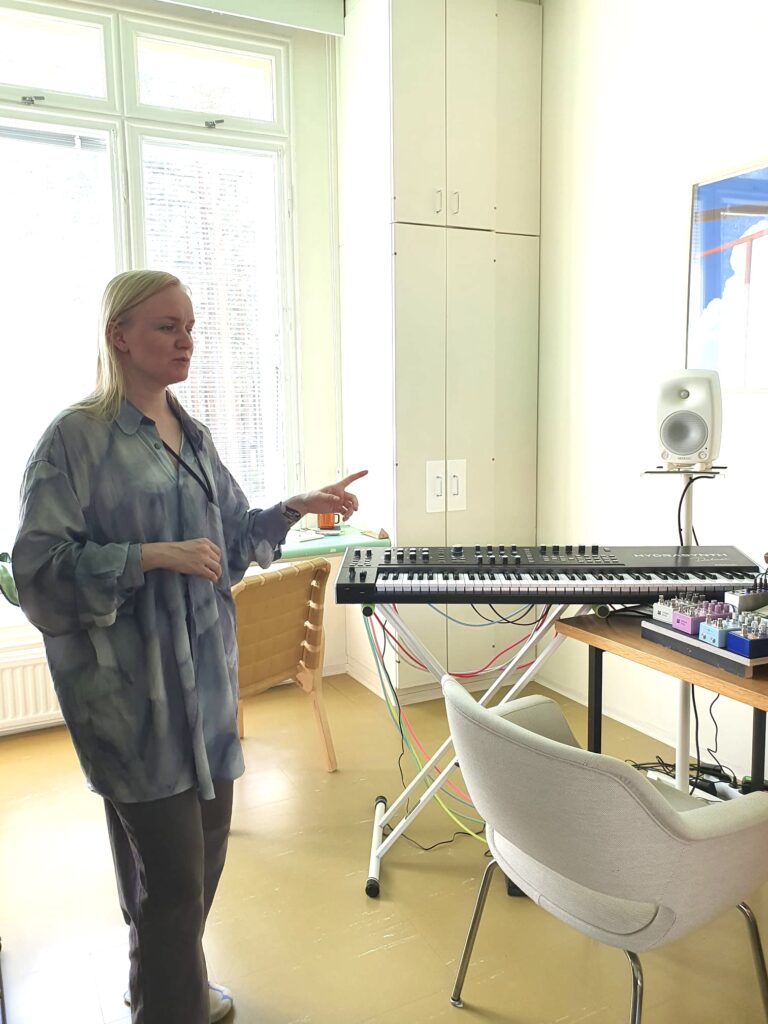
Ringa presents her mobile studio
Manner delights us with her musical sketches, ranging from bubbling minimalism reminiscent of Glass cosine up with Jarre to electronic noise. ’’It’s hard to say which direction this will go’’, Manner laughs.
Very Expensive Door Knobs
During the early 2000s construction boom, American architect Thomas Gardner worked in a high-flying New York architect studio and found himself designing a $27,000 door knob in a project with an endless budget—anything was possible.
’’It was a townhouse, so there were lots of door knobs there; you can do the math. It really was a wake-up call for me”, Gardner says.
Gardner started to think about the true purpose of his work. The trajectory of his work shifted towards the spectrum from collaborative design practice to framing socially critical issues in the context of a material art practice.
’’That includes, among other things, founding a design-build agency in Detroit dedicated to the realization of architecture for social and cultural change and a project in China that focused on the dual mission of researching and expanding traditional Chinese craft coupled with sustainable, equitable community development.”
Gardner also worked leading a graduate design program premised on combining social literacy with design literacy, theory with praxis, dedicated to demonstrating the value of design in addressing complex social problems. In Paimio residency, it’s a totally different story.
“I intend to use the work and research of the legendary 1970s architecture and art project, Le Volume Bleu et Jaune, as a starting point for studying, documenting, and analyzing Alvar and Aino Aalto’s Paimio Sanatorium.”
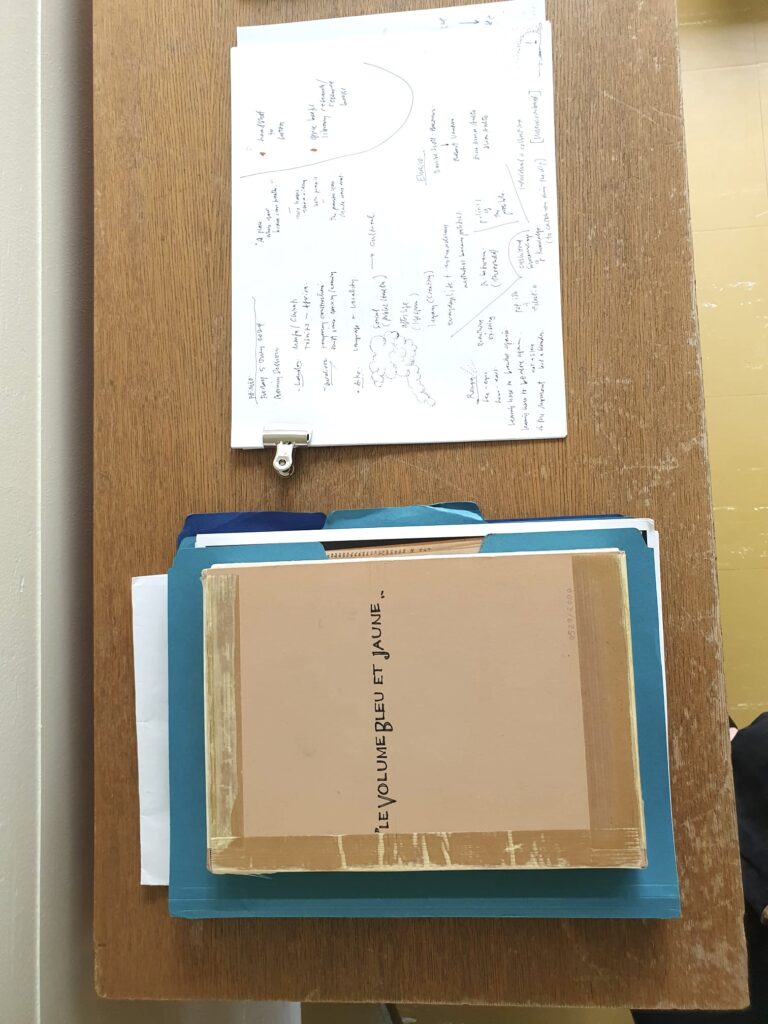
Original book is all that’s left from Le Volume Bleu et Jaune
The residency at Paimio Sanatorium makes it possible to give a rebirth of this important, celebrated work by providing an opportunity to test and apply the methods of the original project in a new, critical context.
What is a Librarium?
American architect Landon Brown also applied to the residency to concentrate on conceptual work. He is the Founder and Principal of Onland Architecture, an independent design and architectural firm, and a visiting professor at Pratt.
’’Both the sanatoria and library typologies occupy a unique place within the modern 19th and 20th century architectural imagination,” Brown says about his work plan.
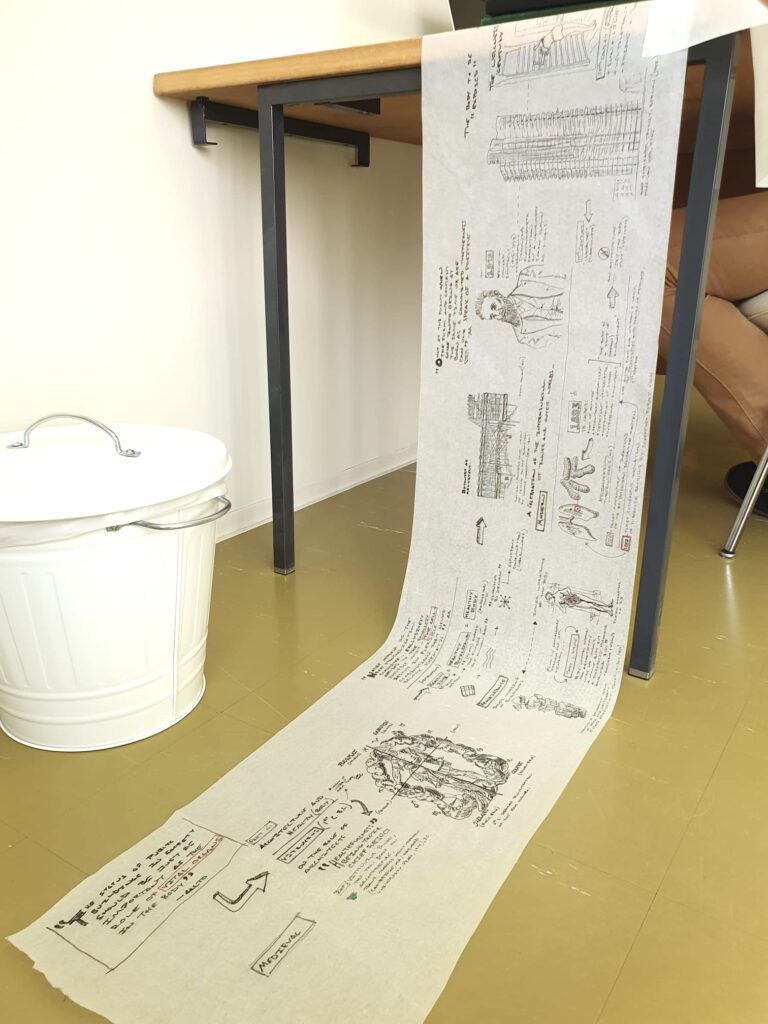
Librarium in making 1
The sanatorium was often associated with a connection to remote landscapes, and the library with the city. Sanatoria were places people didn’t want to be; libraries were. For many architects, sanatoria and libraries were unique laboratories for mining the architecture of ‘public good.’ In some of today’s towns and cities, these projects still feel like the stuff of imagination. Now sanatoria are relegated to the annals of history, while public libraries have been forced to rethink their ontologies.
’’Many public libraries around the world wrestle with the inversely proportionate relationship between municipal support and public need.”
Librarium (Paimio) proposes a research and speculative design effort that explores a hybrid vision of a radical institutional typology inspired by the architecture of the Paimio Sanatorium.
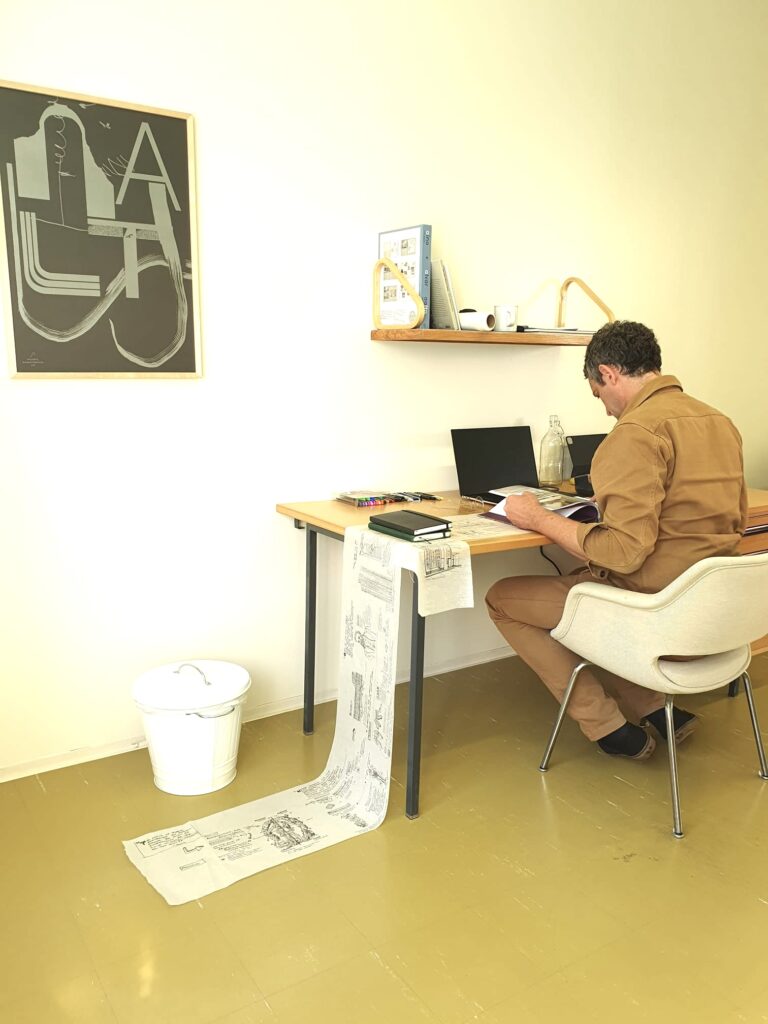
Librarium in making 2
’’How would a public library function if patrons were patients? If afternoon visitors became overnight guests? If media were checked out while people were checked in?”
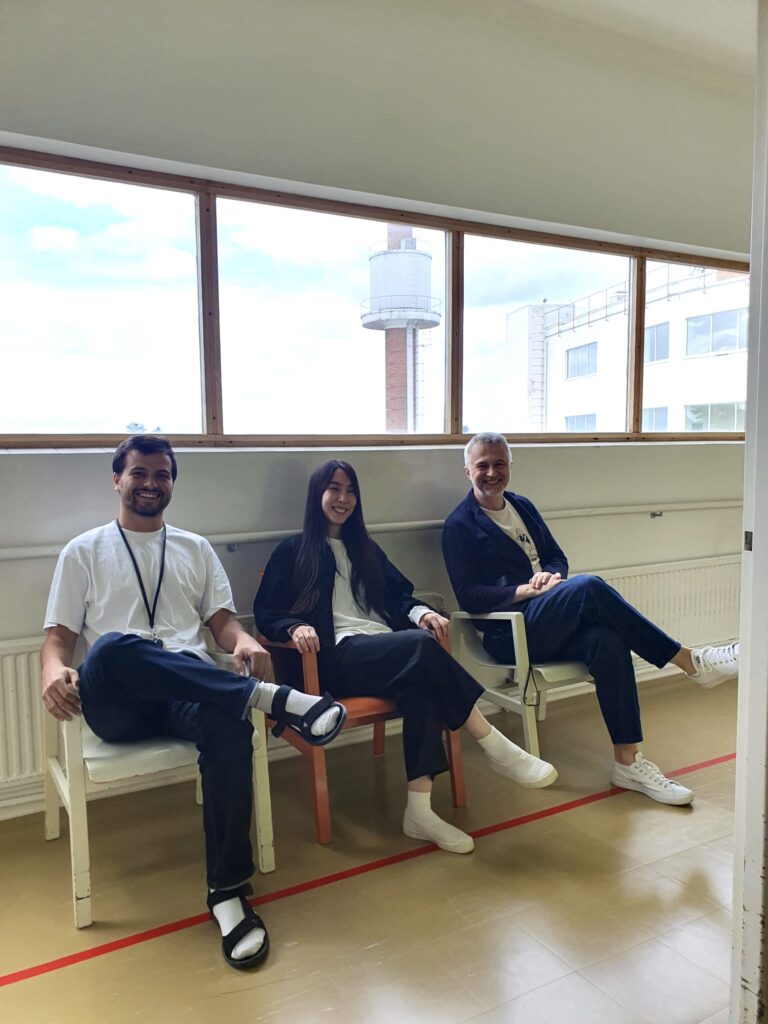
Chilling in residency hall – Enrico, Aiko and Aureliusz

